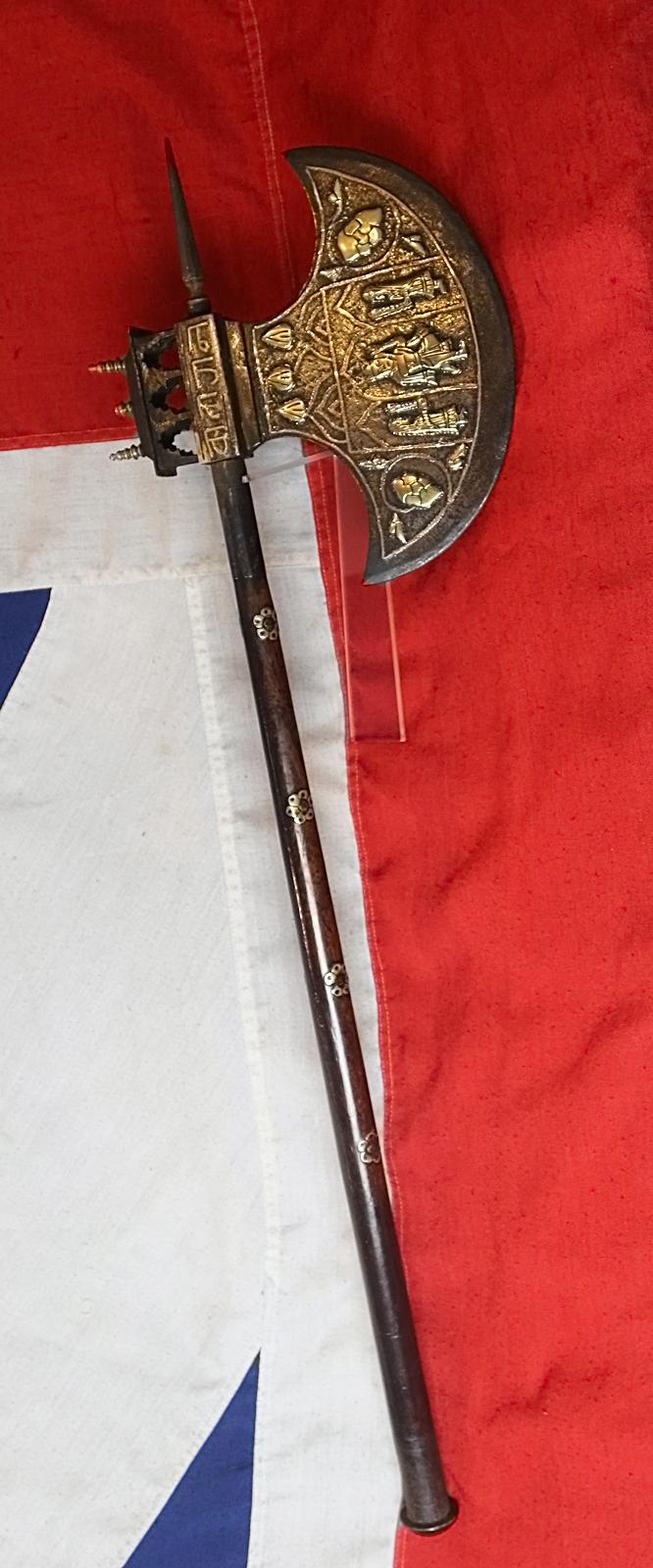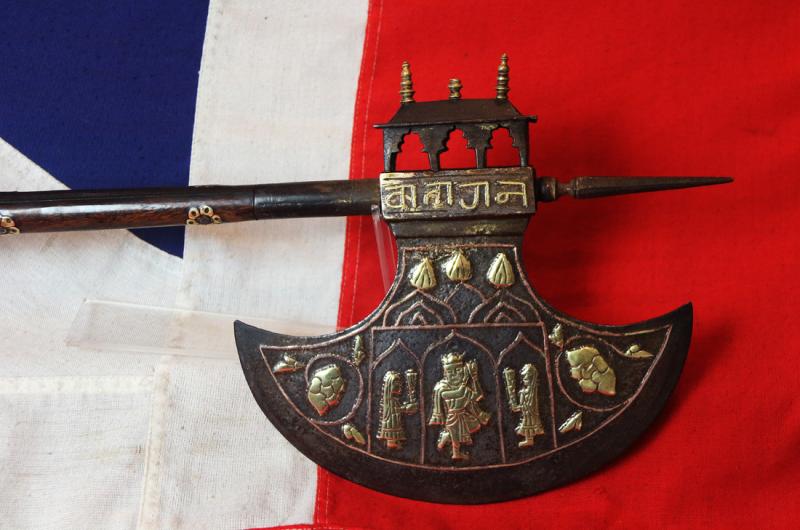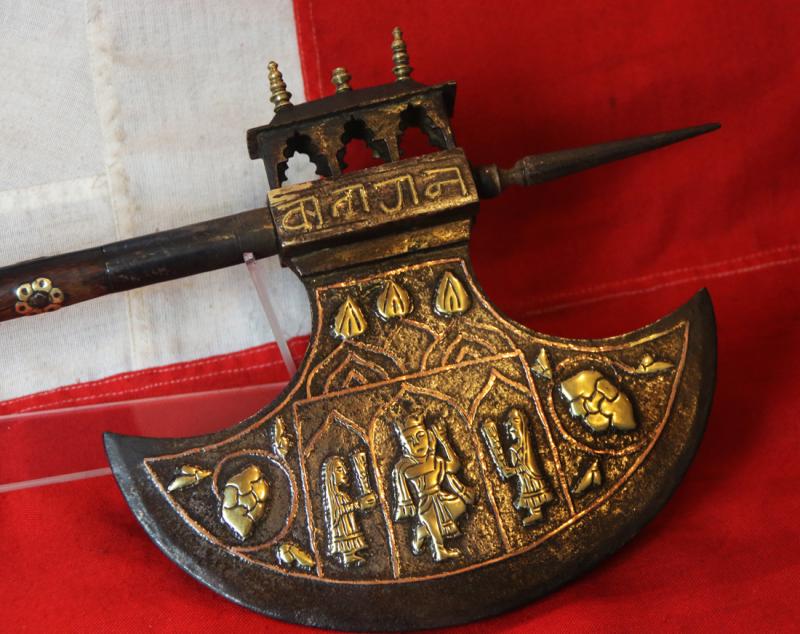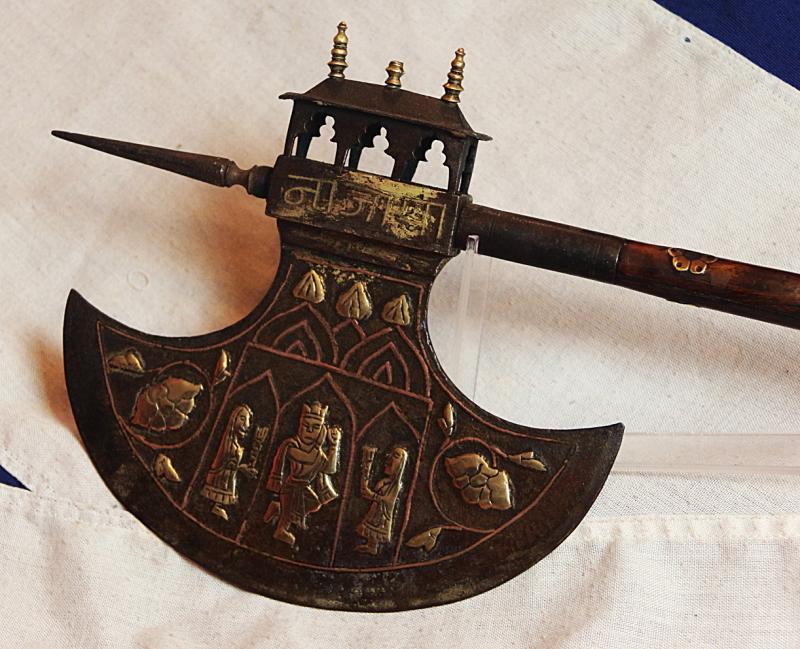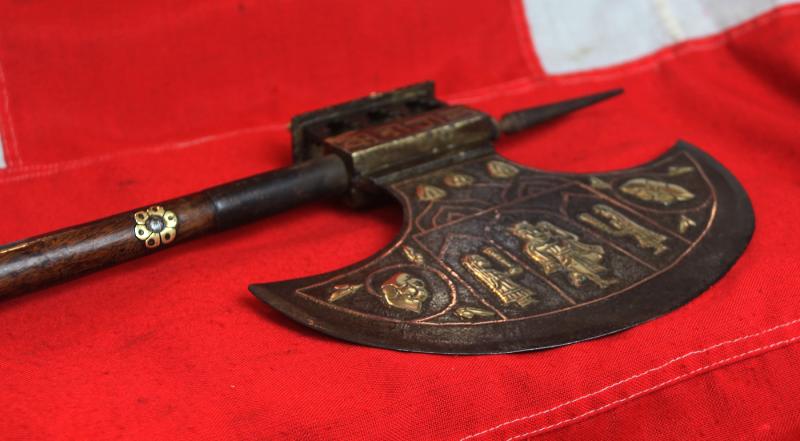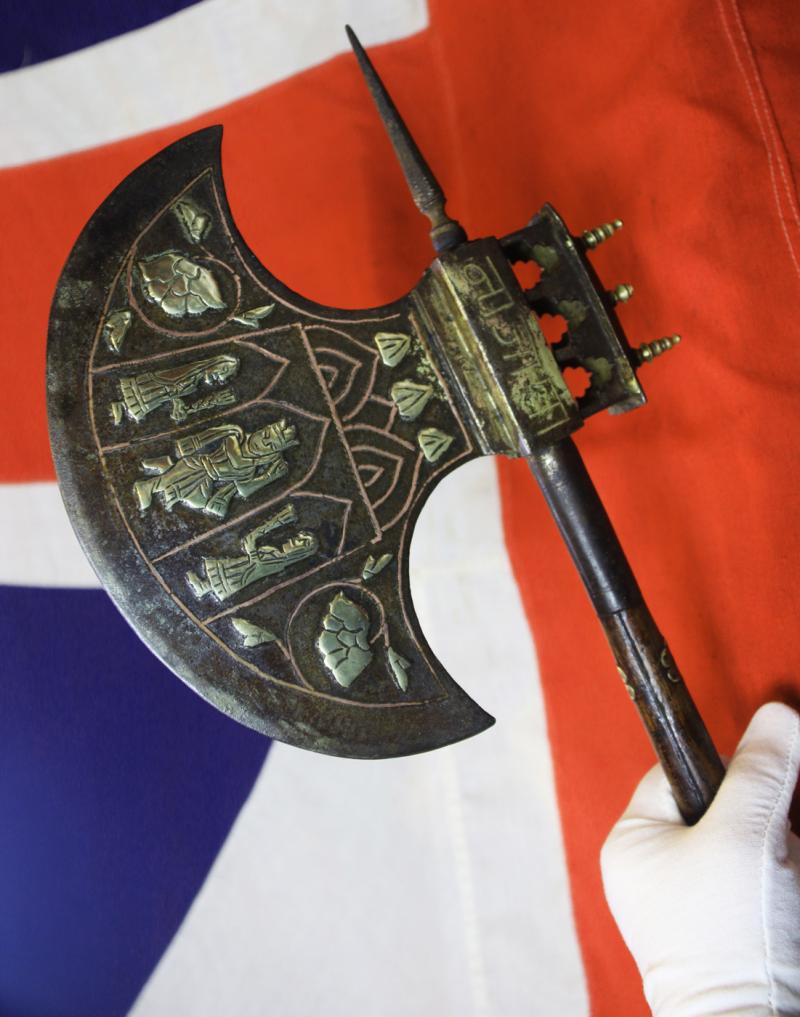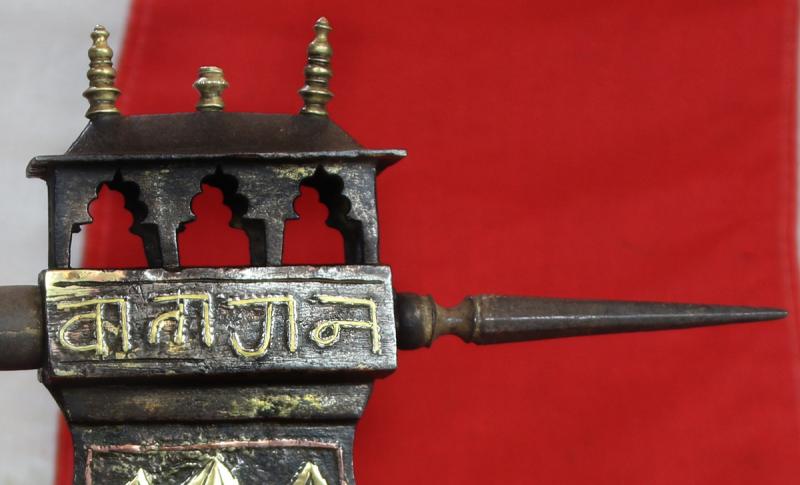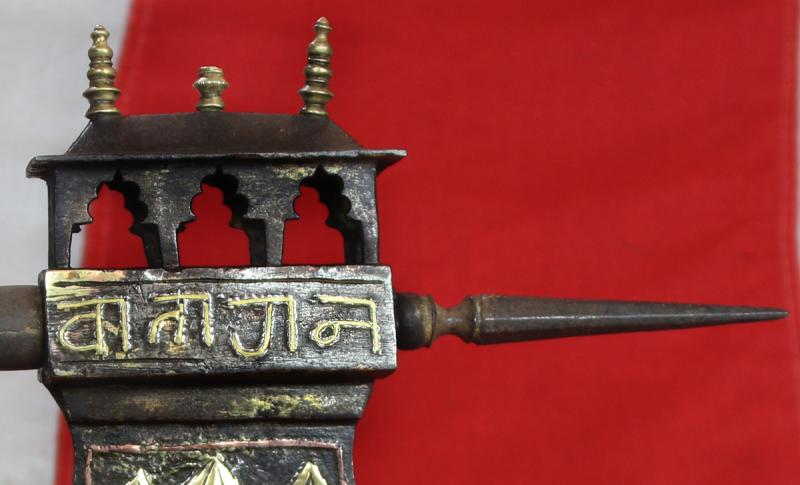A Large Antique Indian Ceremonial Steel Tabar Axe Inlaid in Brass, Copper & Gilt With Scene of Krishna & Temple Decor
India, 19th century. Recently returned from conservation and attention in our workshop. The result is stunning and worthy of the finest museum conservation
Of typical shape with a large crescentric cutting edge, and brass and copper nails, each side of the crescent embellished with chased brass and copper-overlaid figural decoration depicting Krishna playing the flute inside a domed shrine, flanked by two attendants holding fly-whisks, surrounded by floral sprays and vegetal tendrils, the butt with a copper-inlaid inscription and surmounted by brass chhajjas (domed pavillion-shaped structures) the top of the axe head has a sharp faceted steel spike, the patinated wooden shaft is embellished with brass rosettes and a domed pommel end. ,
This 19th century tabar - or saddle axe - is Indian. During the 17th and 18th centuries, the tabar was a standard weapon given to calvalrymen on the field of battle. The tabar would have been carried under the horseman's saddle. This is the elaborate ceremonial version of the tabar saddle axe.
Krishna
Krishna, Sanskrit Kṛṣṇa, one of the most widely revered and most popular of all Indian divinities, worshipped as the eighth incarnation (avatar, or avatara) of the Hindu god Vishnu and also as a supreme god in his own right. Krishna became the focus of numerous bhakti (devotional) cults, which have over the centuries produced a wealth of religious poetry, music, and painting. The basic sources of Krishna’s mythology are the epic Mahabharata and its 5th-century-CE appendix, the Harivamsha, and the Puranas, particularly Books X and XI of the Bhagavata-purana. They relate how Krishna (literally “black,” or “dark as a cloud”) was born into the Yadava clan, the son of Vasudeva and Devaki, who was the sister of Kamsa, the wicked king of Mathura (in modern Uttar Pradesh). Kamsa, hearing a prophecy that he would be destroyed by Devaki’s child, tried to slay her children, but Krishna was smuggled across the Yamuna River to Gokula (or Vraja, modern Gokul), where he was raised by the leader of the cowherds, Nanda, and his wife Yashoda.
The child Krishna was adored for his mischievous pranks; he also performed many miracles and slew demons. As a youth, the cowherd Krishna became renowned as a lover, the sound of his flute prompting the gopis (wives and daughters of the cowherds) to leave their homes to dance ecstatically with him in the moonlight. His favourite among them was the beautiful Radha. At length, Krishna and his brother Balarama returned to Mathura to slay the wicked Kamsa. Afterward, finding the kingdom unsafe, Krishna led the Yadavas to the western coast of Kathiawar and established his court at Dvaraka (modern Dwarka, Gujarat). He married the princess Rukmini and took other wives as well.
Krishna refused to bear arms in the great war between the Kauravas (sons of Dhritarashtra, the descendant of Kuru) and the Pandavas (sons of Pandu), but he offered a choice of his personal attendance to one side and the loan of his army to the other. The Pandavas chose the former, and Krishna thus served as charioteer for Arjuna, one of the Pandava brothers. On his return to Dvaraka, a brawl broke out one day among the Yadava chiefs in which Krishna’s brother and son were slain. As the god sat in the forest lamenting, a huntsman, mistaking him for a deer, shot him in his one vulnerable spot, the heel, killing him.
85cm high.
Code: 24667
2250.00 GBP

